Post by Dan Jang, an undergraduate triple majoring in Computer Science, Biomedical Physics and General Science, and also pursuing a double minor in Mathematics and Interdisciplinary Neuroscience at Portland State University. Dan is a PSU Neuroscience Club General Officer (’21-’24) and served as Club President (’22-’23).
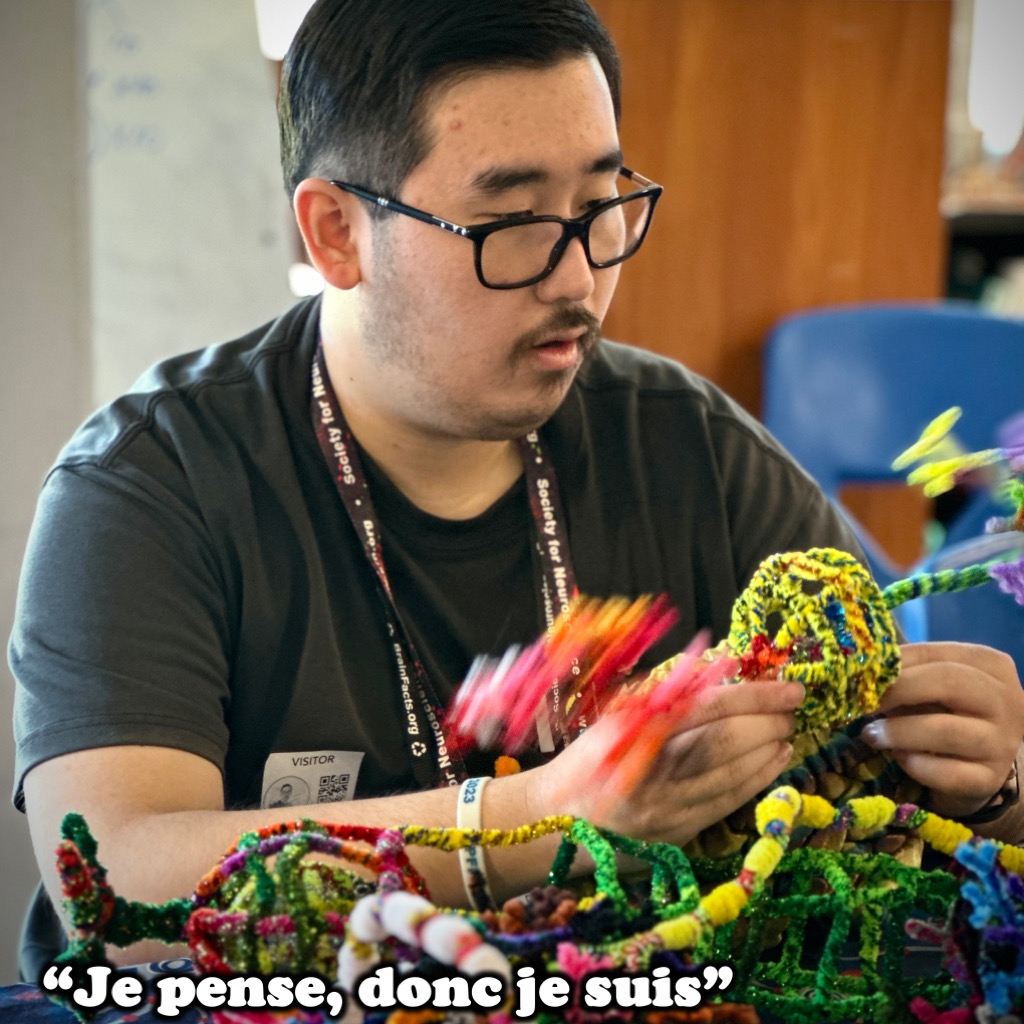
“Je pense, donc je suis,” an insight by European philosopher René Descartes published in his Discourse on the Method in 1637, was originally written in his native French.
It means, famously: I think, therefore I am.
This phrase is more commonly known as Cogito, ergo sum, which is written in Latin, a language that traditionally and still somewhat to this day represents a kind of elite tradition in higher education. Indeed, up until the late-20th century, Latin remained a kind of ‘official’ language taught to most privileged collegiate academics and scholars.
So many terms associated with science, including neuroscience, derive from Latin, or Greek.
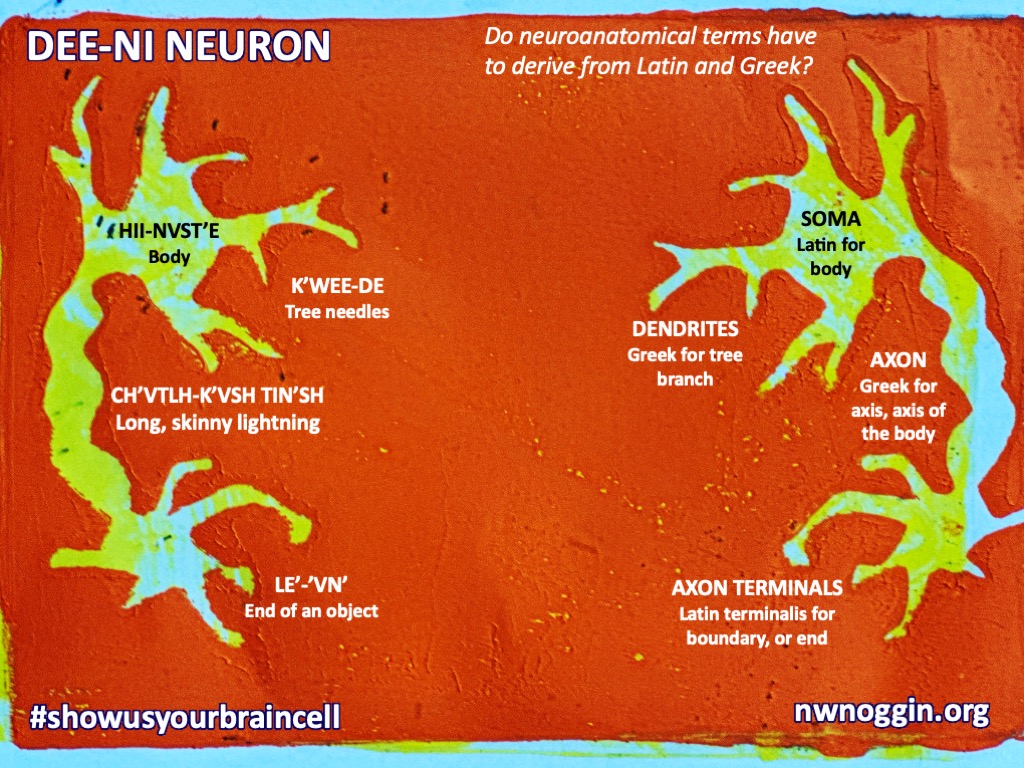
LEARN MORE: Latin and the Elite Tradition in Education
LEARN MORE: Long skinny lightning in Siletz
However, since the intent of René Descartes was to share his insights through the more commonly spoken French language, and let his philosophy reach an audience beyond the upper academic circles – one could argue that his “Je pense, donc je suis” was a form of outreach.

In that same spirit, I believe that genuine, meaningful outreach is important for greater access to higher education and diverse careers, particularly in guiding others through nuanced academic fields such as Interdisciplinary Neuroscience.
LEARN MORE: Neurophilosophy @ the Newmark
LEARN MORE: The Scientific Revolution
As the Portland State University (PSU) motto states (in Latin of course!)…
Doctrina Urbi Serviat, meaning Let Knowledge Serve the City,…
…I believe that as fellow scholars in higher education in Portland, we can best serve our city by sharing the knowledge we’ve been privileged to enjoy. Through the K-12 neuroscience outreach of NW Noggin, we, as PSU students and community members, can share our love and knowledge for neuroscience with our city – locally, as well as regionally, throughout the Pacific Northwest, and beyond.
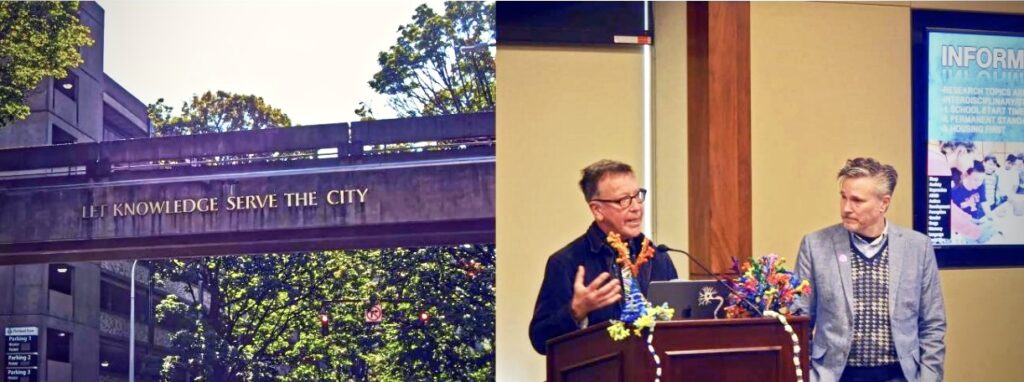
LEARN MORE: Las neuronas son bacánes!
LEARN MORE: Three Lines: Jeff Leake in Beijing
Principles of Interdisciplinary Neuroscience
What does it mean to be interdisciplinary? Well, one definition says: “involving two or more academic, scientific, or artistic disciplines,” suggests complexity, collaboration and diversity.
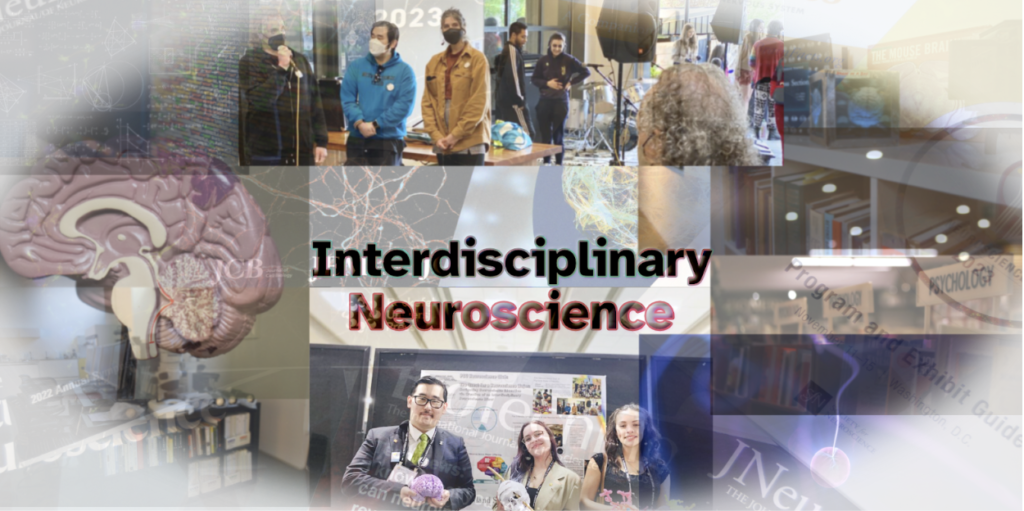
Among the principles of interdisciplinary neuroscience, I think that these are three foundational requirements for growth and advancement
- It requires more than one discipline.
- It is multifaceted (with many aspects, and many faces).
- It is a diverse field.
A multidisciplinary field requires multifaceted knowledge, from a diverse community of minds – thus, we need all the help we can get, both now and for the future of Interdisciplinary Neuroscience.
As Descartes intended for his own school of thought, the advancement and growth of an academic field such as Interdisciplinary Neuroscience require translating its complexities, advanced subjects, and tricky knowledge in ways that are understandable and engaging to all audiences.
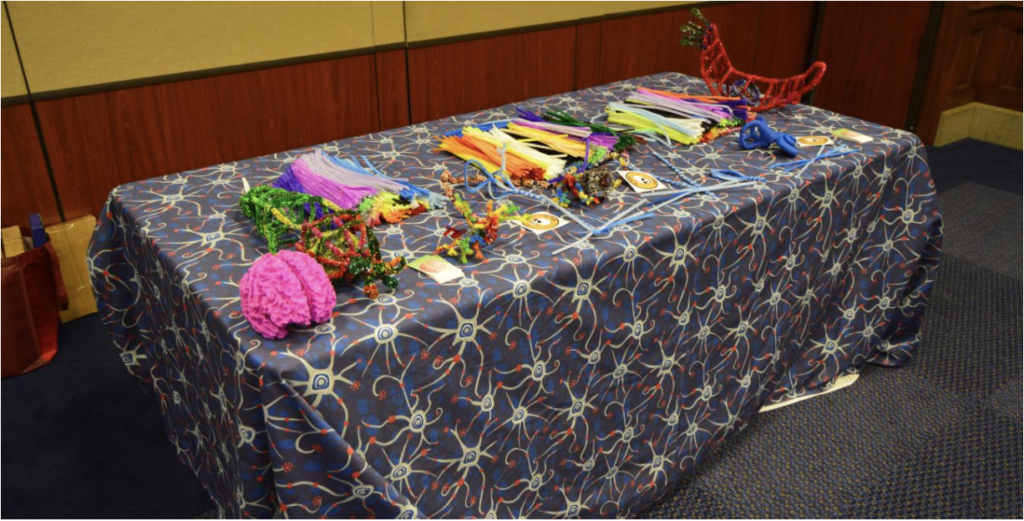
Through my experience with Northwest Noggin, I’ve managed to achieve this by exploring neuroscience in fun ways and by examining the beauty of the brain through artistic expression.
LEARN MORE: STEAM Art Projects
LEARN MORE: How to 3D Print a Brain
To meet the goals of Interdisciplinary Neuroscience, we need active engagement and innovative outreach to serve both our academic and local communities – a core pursuit of NW Noggin.
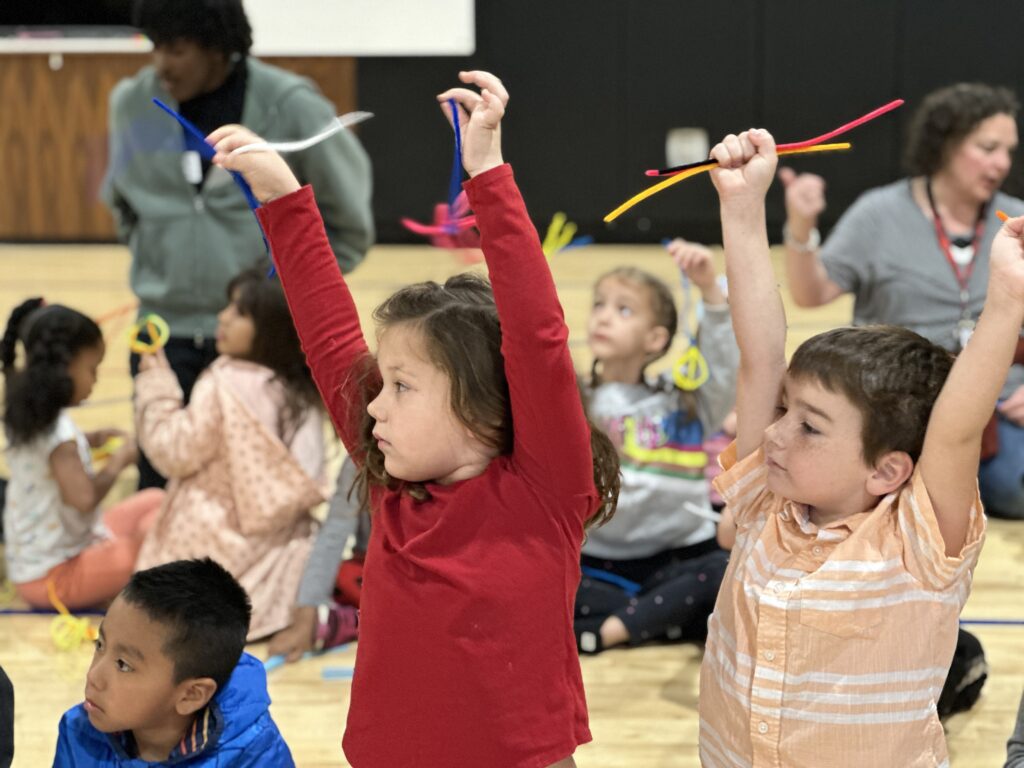
As an all-volunteer-based, non-profit organization, NW Noggin beautifully brings together science and art to genuinely engage K-12 audiences. Additionally, to support the academic growth of prospective young neuroscientists, we strive to encourage the participation of “near peers,” where collaborations between university students, K-12 students, artists, and other members of the public form, with a focus on “creating novel, innovative, multidisciplinary methods of explaining complex ideas in neuroscience.”
LEARN MORE: NW Noggin Mission Statement
LEARN MORE: What is research like?
Interdisciplinarities of Neuroscience
Where my neuroscience journey began
My first experience of anything Interdisciplinary Neuroscience related was at an amazing PSU Neuroscience Club event on April 4th, 2021 – held remotely via Zoom – where Neuro President Alisha Steigerwald hosted Susannah Cahalan, the New York Times bestselling author of the book Brain on Fire.
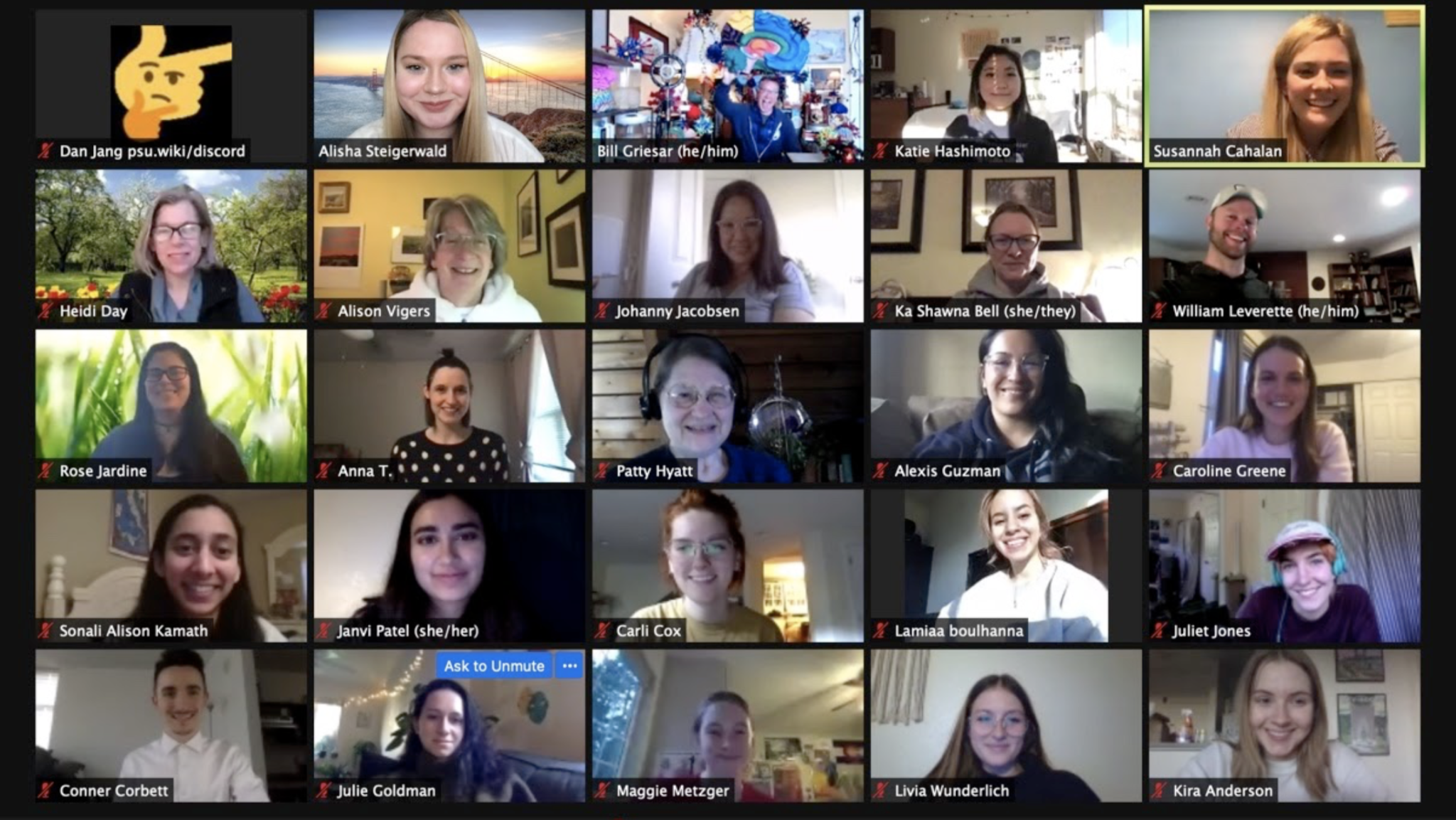
LEARN MORE: STEAM Ahead: A new interdisciplinary neuroscience minor at PSU!
This neat discussion was held just a few months before I became actively involved in the leadership of our lovely, passionate, and dedicated PSU Neuroscience Club. I started my incredible journey in October 2021 as a General Neuroscience Club Officer.
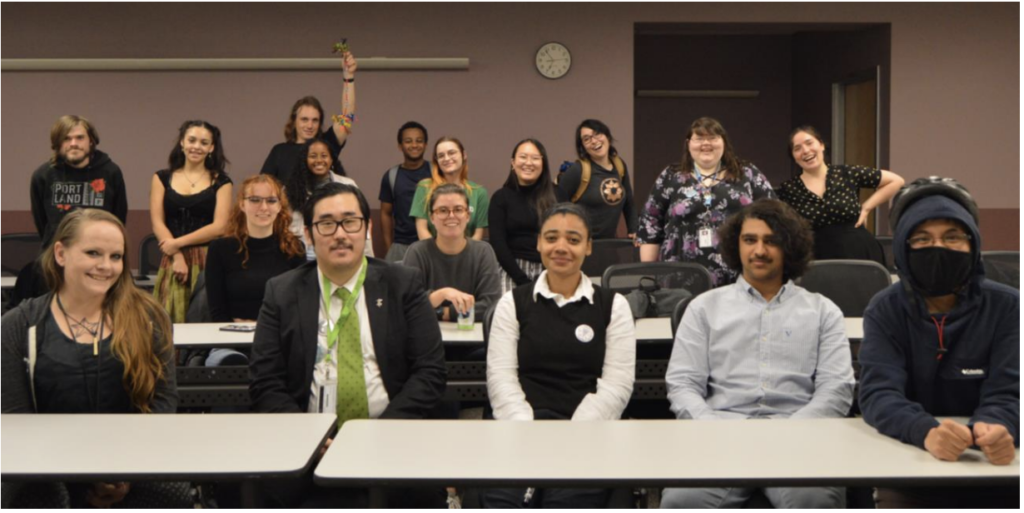
I’ve been honored to have served as the PSU Neuroscience Club President (for 2022-2023) and now I’m continuing my third year of involvement as a General Neuro Officer again!
LEARN MORE: Portland State University Neuroscience Club
A personal perspective and approach to Interdisciplinary Neuroscience
Starting in the fall of 2021, PSU began offering a unique Interdisciplinary Neuroscience minor – thanks largely to the activism of enthusiastic PSU undergraduates and select teaching faculty, particularly those involved with NW Noggin and the Neuroscience Club.
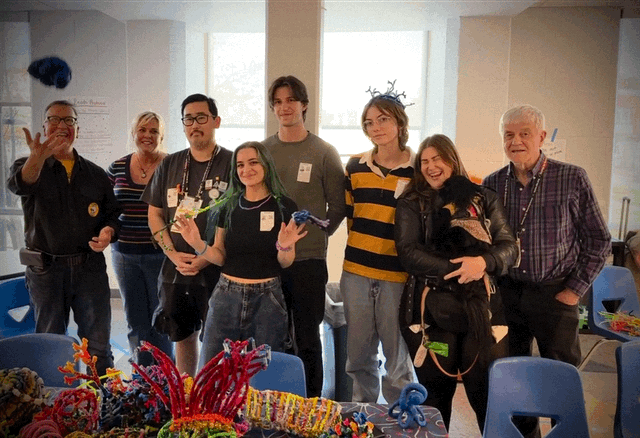
However, as I transferred from Portland Community College in the fall of 2020 – the first year of a pandemic and a year before our Interdisciplinary Neuroscience minor came to fruition – I recall wanting to pursue my own unique path to (interdisciplinary) neuroscience at PSU.
LEARN MORE: PSU Transfer Resources
As a senior undergraduate student at PSU, I sought to be enriched in my academic interests to the fullest extent I could bear. With a concurrent degree pathway (two degrees at the same time) in a Bachelor of Science (B.S.) and Bachelor of Arts (B.A.) combo, I’ve strived to become a strong, interdisciplinary neuroscientist educated in both science and the arts.
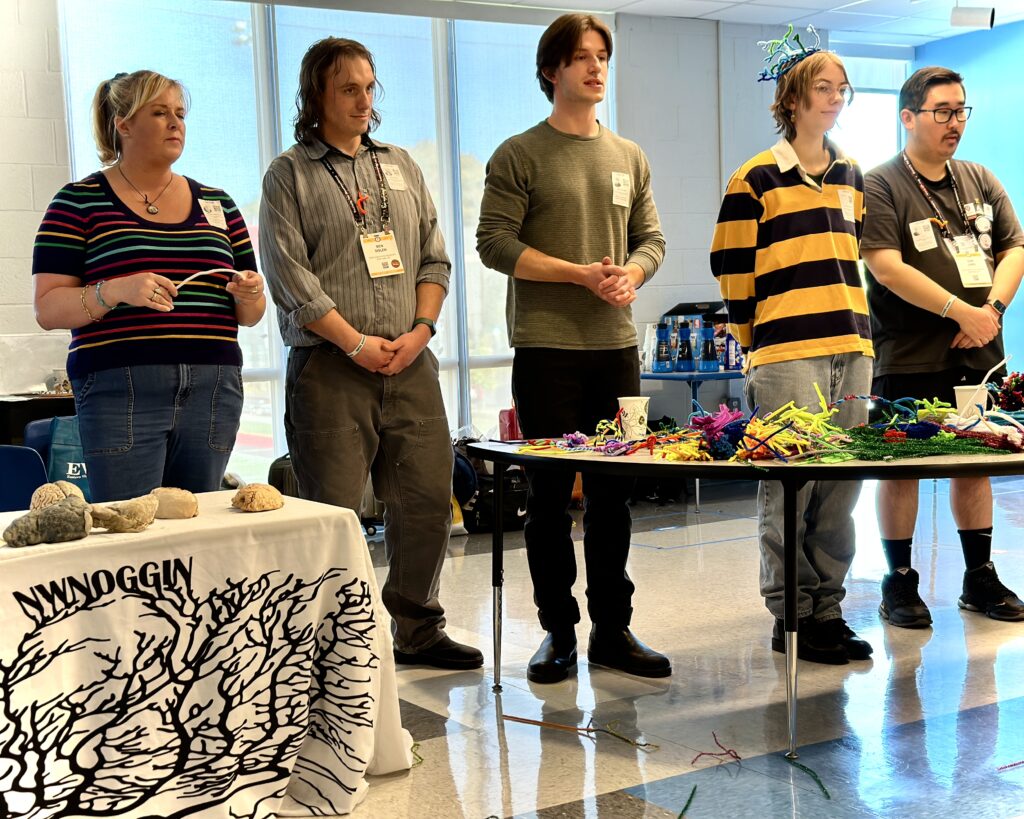
After around three years at PSU, I have nearly completed my extensive studies as a triple major in Computer Science, Biomedical Physics, and General Science, with a double minor in Interdisciplinary Neuroscience and Mathematics.

My goal is to pursue an MD/Ph.D., with my fingers crossed for Computational Neuroscience or another similar interdisciplinary Neuroscience program at the doctoral level.
LEARN MORE: Learning Center @ PSU Millar Library
I NEED THIS: SHAC @ PSU – Mind Spa
My personal perspective on Interdisciplinary Neuroscience is based on the notion that the rise of a rapidly developing technological, digital era ushers in great, novel opportunities for the enrichment of many different fields of academic study and thus, tremendous possibilities for immense, overall societal advancement. I want to learn from multiple perspectives, and I’m an optimist.
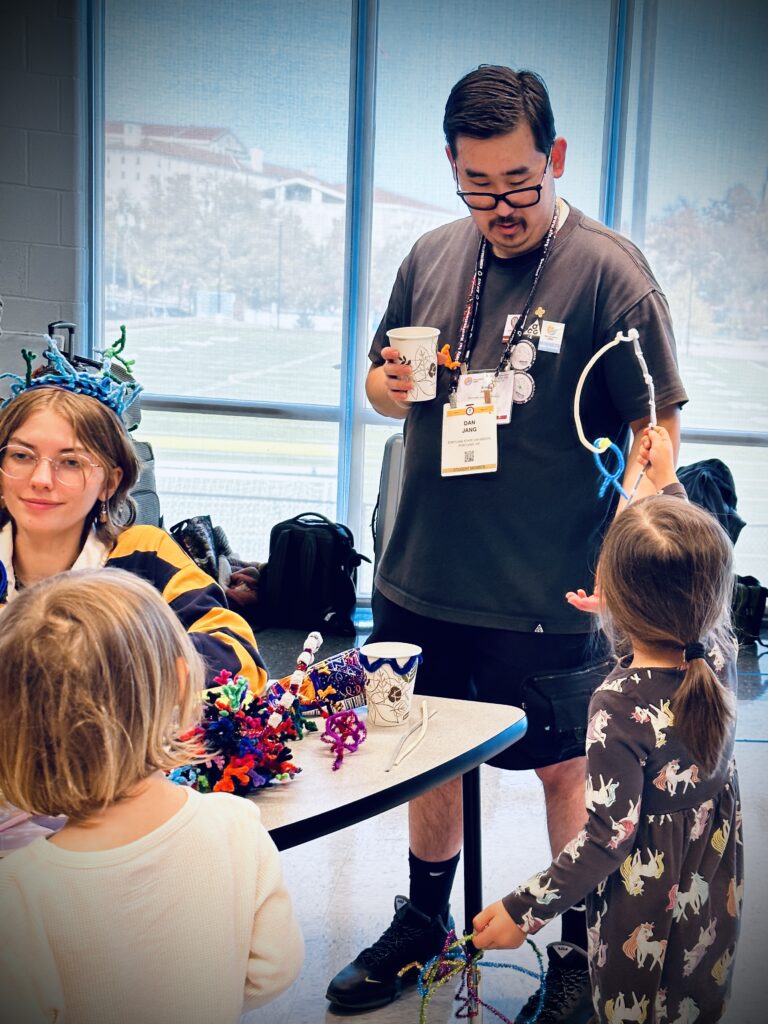
Particularly, I’m excited about the possibilities that modern technology and science may offer, including new ways to analyze complex data, the ability to visualize once unfathomably intricate concepts, and efforts to effectively connect across disciplines with others.
…I also thought it would be kind of cool to be a neuroscientist who knows how to program and is familiar with how the universe operates, sort of.
Interesting Interdisciplinary Intersections (…but tricky!)
A seemingly true, but of course, mostly false jab made by fellow STEAM (Science, Technology, Engineering, Arts, and Mathematics) scholars to others in different fields, goes something like this comic from XKCD: ‘Biology is applied chemistry, chemistry is applied physics, physics is applied mathematics, mathematics is applied philosophy’, and so back and so forth.
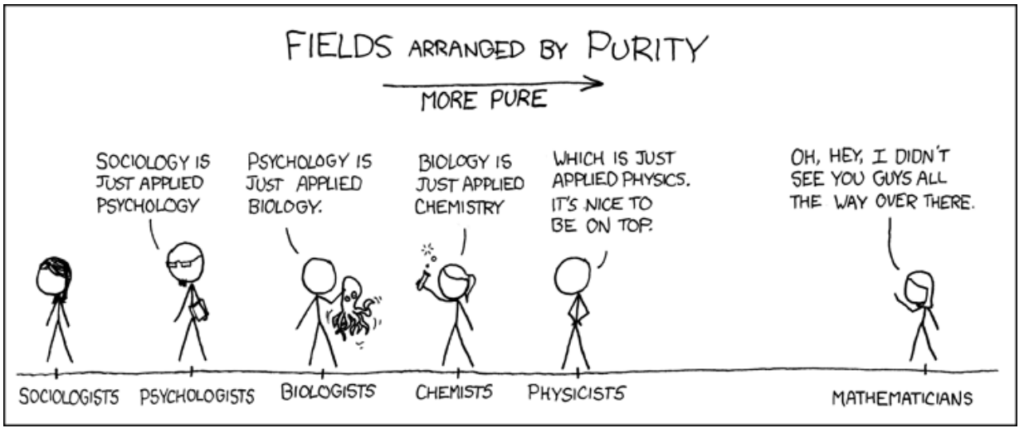
Image from XKCD
While some directly-woven fields like Psychology and Biology can be understood more clearly as connected to Interdisciplinary Neuroscience (in other words, psychology and its biological underpinnings are already clearly neuroscience) – other STEAM fields such as Art, Computer Science, Physics, and Mathematics also can be included.
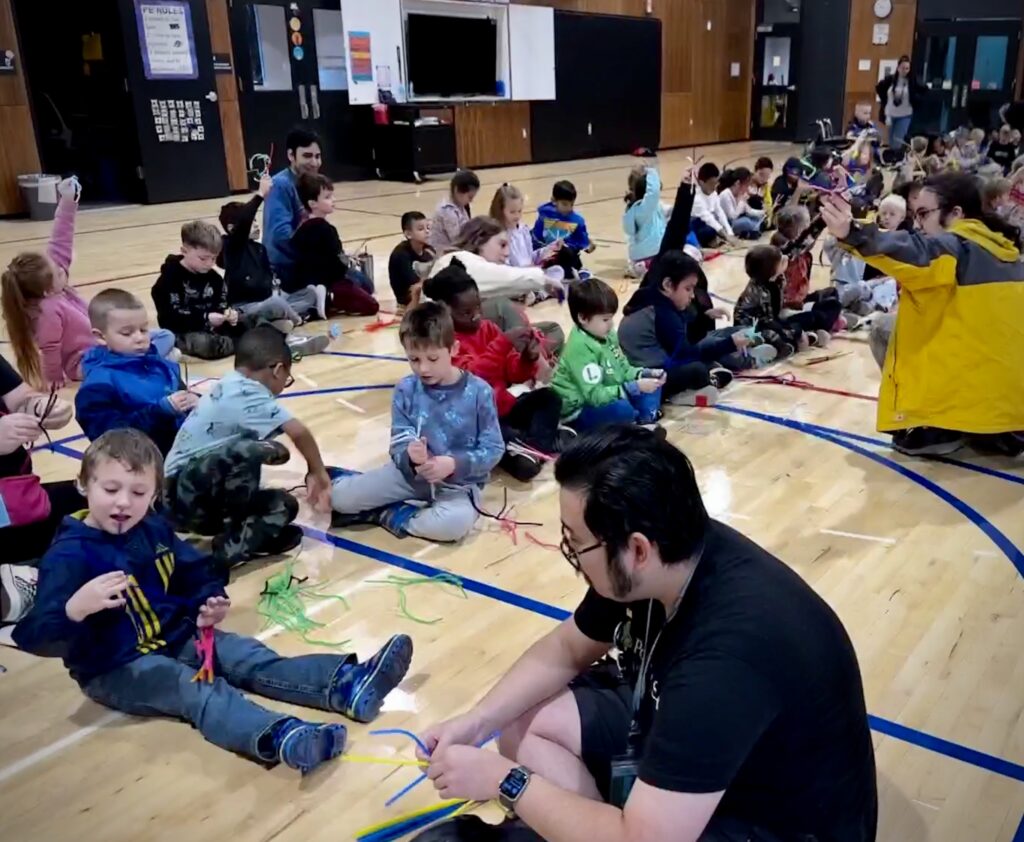
Though I’ve crafted many pipe cleaner neurons during outreach, and I really love art, I’m going to focus more here on the fields that I’m currently pursuing, and how they relate.
LEARN MORE: Applied Neuroscience – & STEAM
What about Computer Science?
Did you know that Artificial Intelligence (CS 441) and Machine Learning (CS 445) are courses included in Elective Track 3: All Other Majors of the Interdisciplinary Neuroscience Minor at PSU?

The inspiration for artificial neural networks. Taken from Karlijn Willem’s datacamp tutorial.
LEARN MORE: What it’s like to work in a computational lab and opportunities for entering
into research
LEARN MORE: The Future of Computing by Dr. Christof Teuscher (teuscher.:Lab of
Electrical & Computer Engineering, Portland State University, 2019)
LEARN MORE: Neural networks course by 3Blue1Brown
“AI” or “ML-powered (machine learning)” are heard often as buzzwords in recent media and news. However, apart from the media stereotypes and some mainstream applications (e.g., generative AI), artificial intelligence, machine learning, and many fields in Computer Science have much to offer to interdisciplinary neuroscience. Let us explore a few.
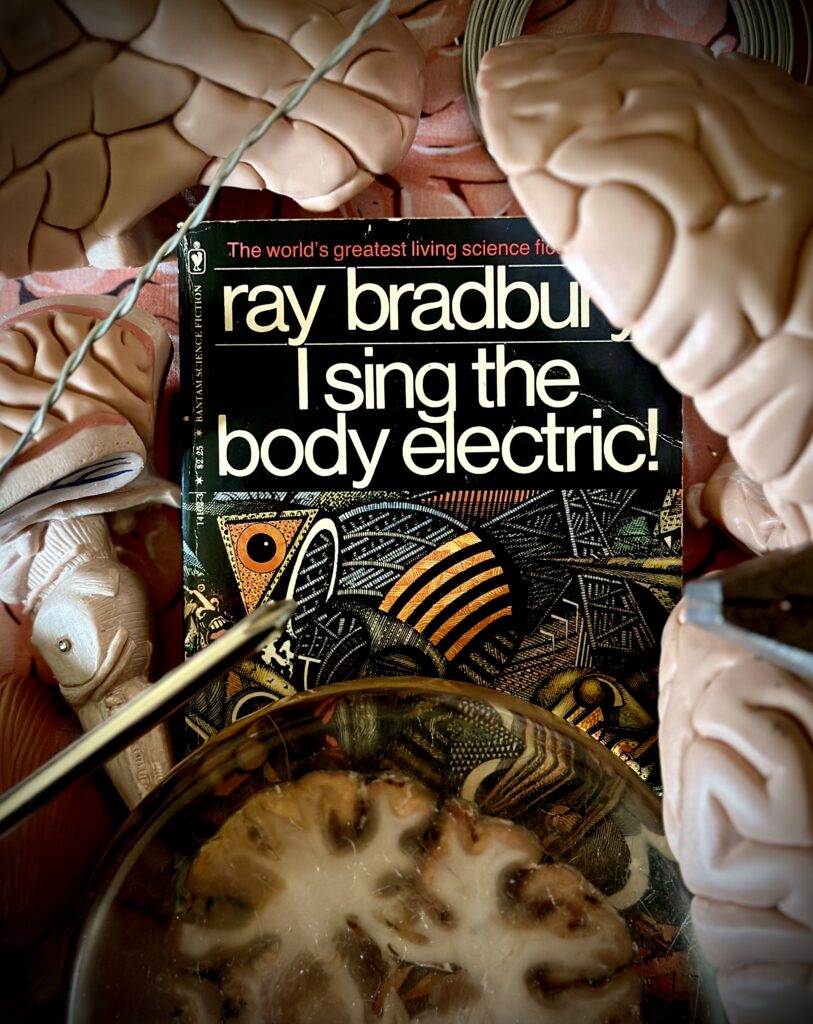
Computational neuroscience and neuroinformatics, for example, while similar and related in many aspects, are two different, but both very awesome fields.
Computational neuroscience (also termed Mathematical Neuroscience) uses Computer Science and Mathematics to implement complex, computational models that are based on the biological brain and nervous system. Neuroinformatics, in contrast, uses Computer Science to compute large amounts of neuroscientific biometric data, similar to Bioinformatics.

IMAGE SOURCE: Computational neuroscience and neuroinformatics: Recent progress and resources
LEARN MORE: On Neuroinformatics: Mathematical Models of Neuroscience and Neurocomputing
LEARN MORE: Day in the life of a PhD in Computational Neuroscience in the Netherlands
LEARN MORE: Computational modeling of the brain – Sylvain Baillet by Serious Science
LEARN MORE: Computational Neuroscience – SYDE 552
Another incredible, emerging field – where computational neuroscience lays the groundwork that drives its advancement – is Neuromorphic Computing, where the understanding of the brain and cognition through neuroscience is then applied to Computer Science.
What is neuromorphic computing? Well, it was described in recent (2016) paper in the Journal of Neural Engineering in the following way: “The singular characteristic of neuromorphic computing is that it takes inspiration from what is known about the structure and operation of the brain.”
LEARN MORE: Large-scale neuromorphic computing systems
The first image below provides a good overview of neuromorphic computing and the second compares neuromorphic versus more traditional Von Neumann computing architectures.

IMAGE SOURCE: Towards spike-based machine intelligence with neuromorphic computing
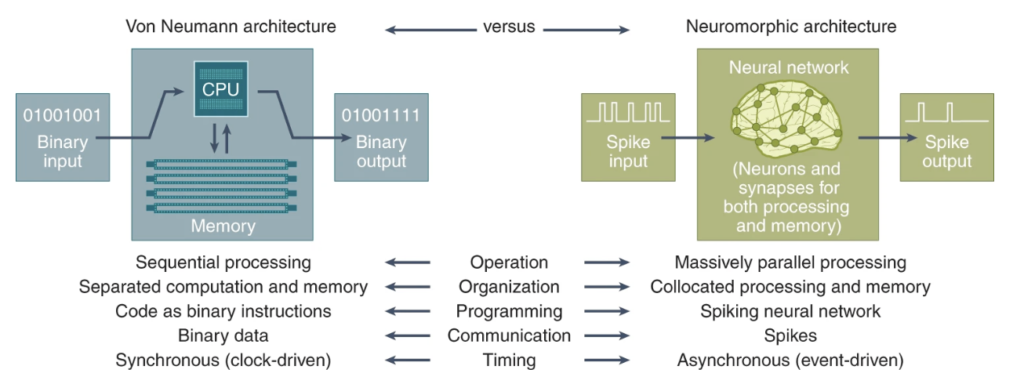
IMAGE SOURCE: Comparison of the von Neumann architecture with the neuromorphic architecture
LEARN MORE: Turing, von Neumann, and the computational architecture of biological machines
LEARN MORE: The future of computing–new architectures and new technologies
In short, neuromorphic computing seeks to replicate or learn from the biological systems that enable deep thought, in creating more efficient computers (and to bring us ever-so-closer to the android-populated, still fictional realm of Westworld).
LEARN MORE: What is Neuromorphic Computing? | AI 101 by Jordan Harrod
LEARN MORE: Large-scale neuromorphic computing systems
LEARN MORE: Can We Build an Artificial Hippocampus?
And Physics!
“Physics attempts to explain the phenomena we observe or infer on Earth and in the universe. It has made possible a modern understanding of the origin of the universe. Physics also helps us explain the behavior of biological materials and chemical processes.”
– Could One Physics Theory Unlock the Mysteries of the Brain?
In order to create such brain-inspired computers, and apply the computational neuroscience techniques of neuromorphic computing, along with all the perplexing software and hardware ultimately required, we need to consider and explore the essential role of Physics in Interdisciplinary Neuroscience.
LEARN MORE: Physics for Neuromorphic Computing
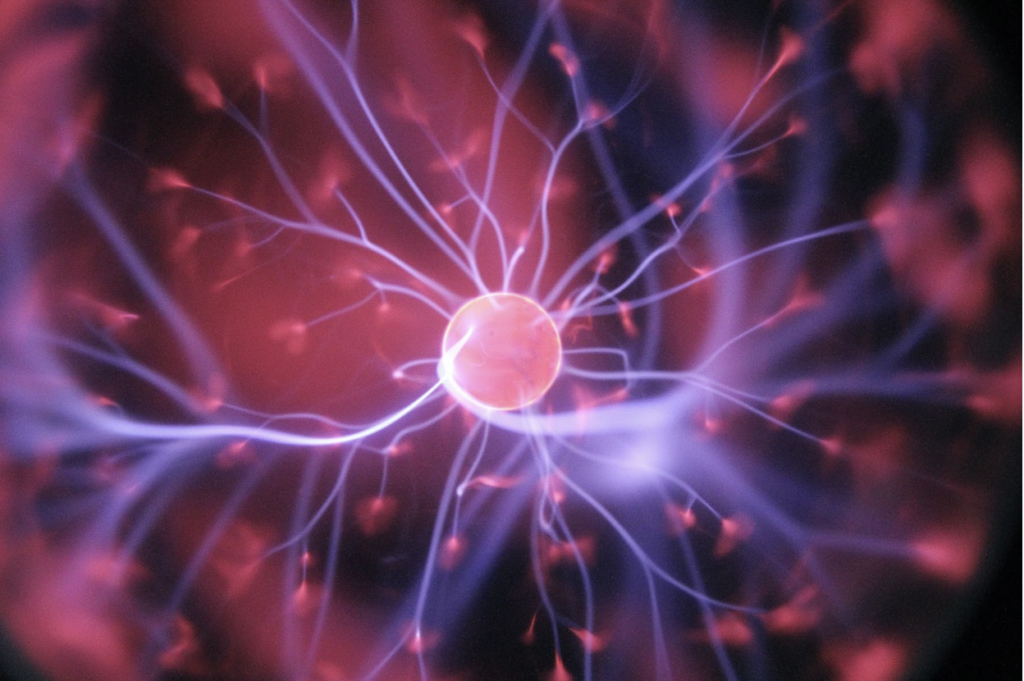
IMAGE SOURCE: Purple and Pink Plasma Ball
Physics can also play a role in neuroinformatics. For example, in a cool project from my Computational Physics class in Spring 2023, I explored neuroinformatics in the processing for quantizing and visualizing brainwave data from electroencephalography, or EEG, which represents the electrical activity of the brain over some time. I measured brain activity from an OpenBCI Ultracortex Mark IV headset, with 8-electrodes and a Cyton board from OPENBCI.
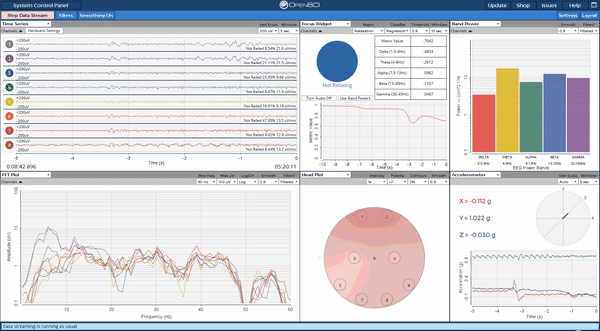
To explain what “quantizing” and “visualizing” means in this context, the basic objective of my project was to take raw EEG brainwave data from an EEG headset, process the raw stream of that neurological data, analyze it, and then package the results into a more digestible, accessible, easier-to-understand form – the core of the field of Neuroinformatics.
LEARN MORE: 3 Ways Physics Can Help Us Understand the Brain by SciShow Psych
Physics ultimately helps interdisciplinary neuroscientists better explain mechanical, and well, physical phenomena that are involved in neuroscience; for example, understanding action potentials or electrical brainwaves – as well as to assist in the computational modeling of the complex, intricate structures of our brain and nervous system.
And of course Mathematics
Physics and Mathematics can be viewed by many as two incredibly similar academic fields – but of course, they are not exactly 1-to-1.
As Richard Feynman puts it, “physics is not mathematics and mathematics is not physics” – yet, “one helps the other”, where Mathematics enables experimental and theoretical physicists to make discoveries and answer questions about their findings.
LEARN MORE: Where math meets physics
Mathematics most definitely represents one of those tricky topics for many, myself included. Interdisciplinary neuroscience research involves using complex mathematics to draw conclusions, analyze data, and glean statistical findings from studies (like from my previously mentioned EEG physics project – processing raw EEG data to visualize different types of brain waves).
LEARN MORE: Mathematical Neuroscience
LEARN MORE: Neural manifolds – The Geometry of Behaviour
LEARN MORE: Logarithmic nature of the brain
LEARN MORE: How to learn Math for Computational Neuroscience on your Own
LEARN MORE: Gaute Einevoll – Neuroscience with both hands: Bridging scales with mathematics
How do we navigate and nurture interest in these tricky Interdisciplinary Neuroscience fields?
Pursuing STEAM fields can be intimidating.

Figure 2-1: Occupations of the workforce ages 18–74, by sex, ethnicity, race, and
disability status: 2021 (NCSES & NSF, 2023)
Undergraduate programs in Computer Science, Physics, and Mathematics can be somewhat infamous for their academic difficulty and rigor – leading to disenchantment or disillusionment for many students. But perhaps it is possible to imbue young students early on with the confidence to carry on – despite the challenges posed by STEAM subjects.
LEARN MORE: Diversity and STEM: Women, Minorities, and Persons with Disabilities
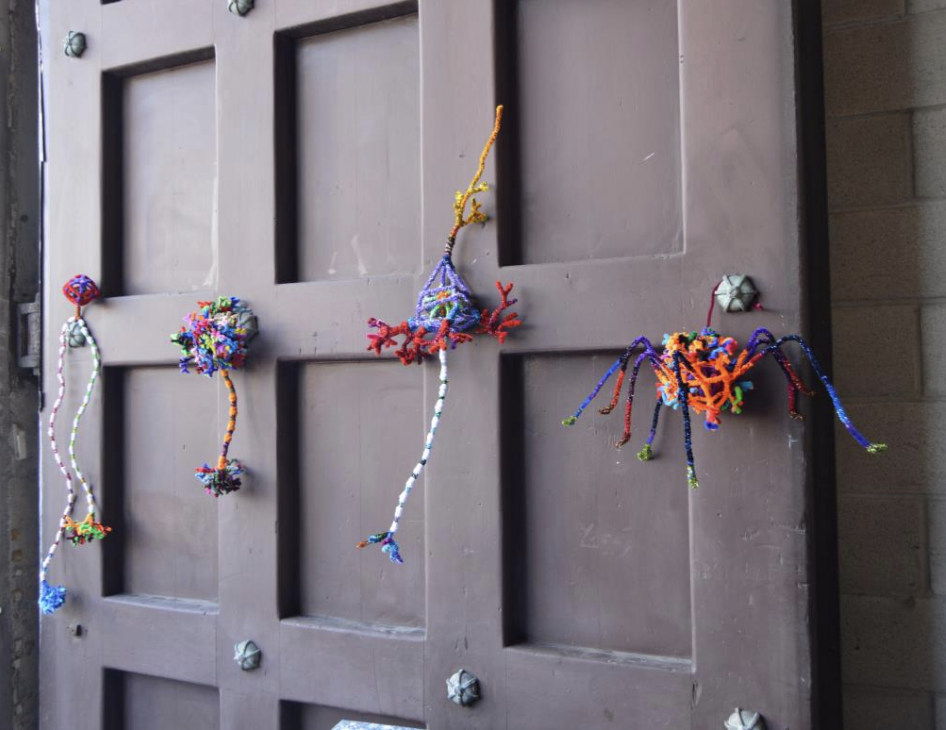
Growing up as an elementary school kid, I recall not ‘actually’ reading most books, unless some direct chapter/book assignment was required. During ‘independent reading times,’ I would usually have a stack of Garfield graphic novels (which counted as ‘books’), as I simply did not find other books interesting.
In other words, as a kid, I got distracted pretty quickly and often!
However, the one thing I found very motivating were activities that involved active engagement – for example, once in a blue moon, a substitute teacher opted to put in a good ol’ tape of Bill Nye the Science Guy, or (my personal favorite), organize a Mad Science day, where enthusiastic, warm folks in lab coats took over our classroom for a few periods, performing amazing science experiments and demonstrations, doing their best to keep up with our barrage of questions!
I realized that if hands-on, self-directed learning was involved, I would join in and learn.
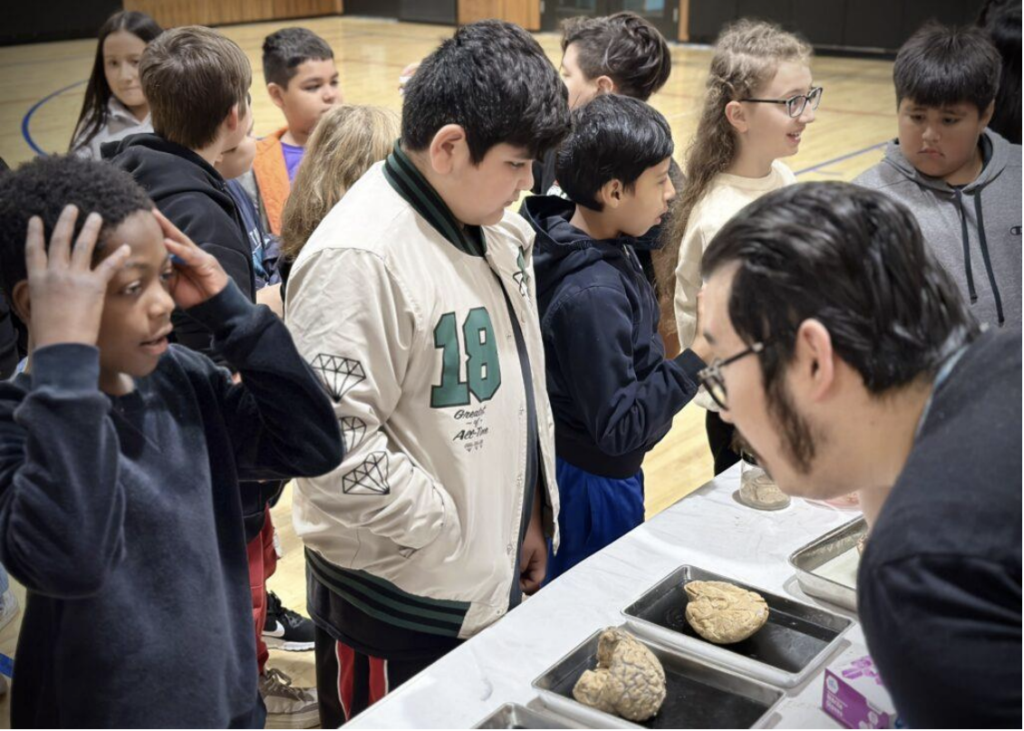
I also remember growing up largely being perceived within the ‘nerd’ pigeonhole, where it often felt almost weird that I happened to talk about computers and brains more often than about cars and sports at the cafeteria, or just not having other classmates whom I could talk with about science topics in general – or at least given the best that the 2nd grade version of myself could muster.
Thus, I think there are at least two significant factors that might be discouraging or decreasing interest in higher education, particularly STEAM, at an early age (K-12):
- Too many structured academic tests, and a lack of access to fun, engaging opportunities to explore different topics or support existing academic interests through experiences that value your ideas.
- A community or network of near peer role models available to mentor and teach young people about higher education and career opportunities, as well as having like-minded friends who share common interests or passions – in other words, knowing that you are not alone.
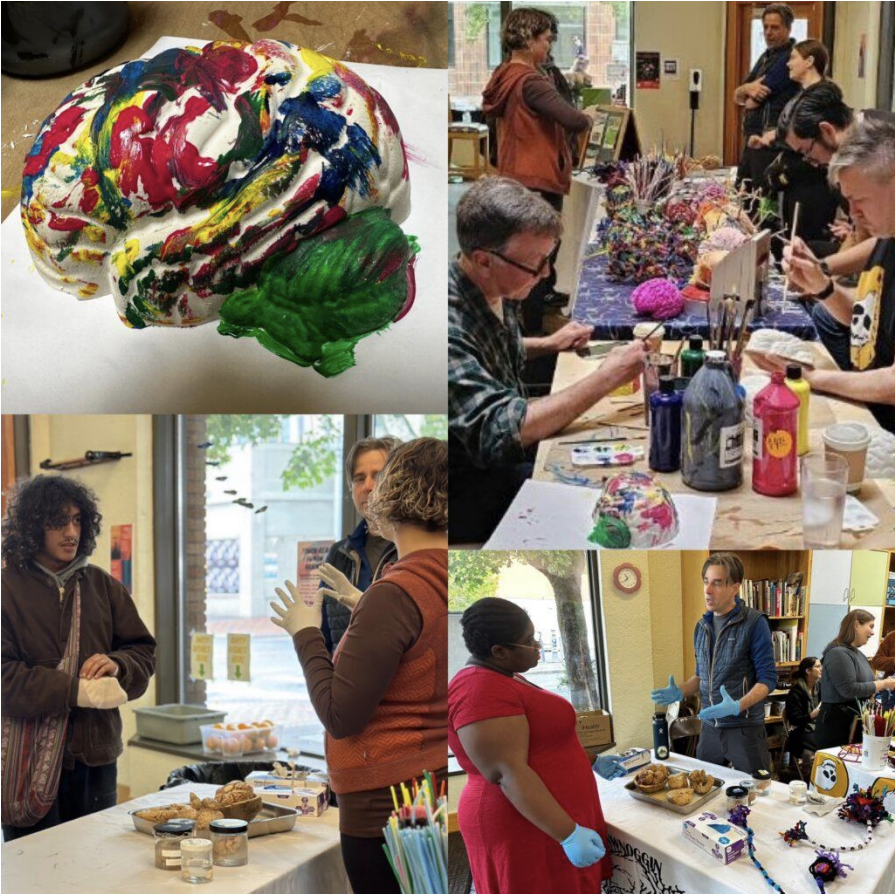
In maintaining the interdisciplinary community of future neuroscientists, the nature of NW Noggin K-12 engagement and outreach helps to build early, academic confidence for higher education – specifically, as outreach events are centered around fun, engaging educational activities, cultivating communities interested in neuroscience, and ultimately, to spark a lifelong interest in science and art.
LEARN MORE: Kayla Townsley: The neuroscience of teaching art & science
LEARN MORE: Midbrains & more @ MESA!
Meaningful Neuroscience Outreach and Impact
A lot of food for thought here – computer science, physics, mathematics – such tricky topics in interdisciplinary neuroscience are difficult to navigate in this growing academic and scientific field. We can do so much to help and teach others to learn difficult subjects, impart lifelong interests, and foster new neuroscientists to come – and at NW Noggin outreach events, we achieve this through a combination of science and the arts.
As René Descartes sought to translate his ideas to reach more minds than just those of the well-resourced elite, universities, I think, including students like myself at Portland State, can and should promote our love for neuroscience in accessible interdisciplinary outreach.
If I think, therefore I am, then meaningful outreach successfully imparts this core, lifelong inspiration, “I like neuroscience, therefore I will become a neuroscientist.“

And it really can start with a few pipe cleaners.
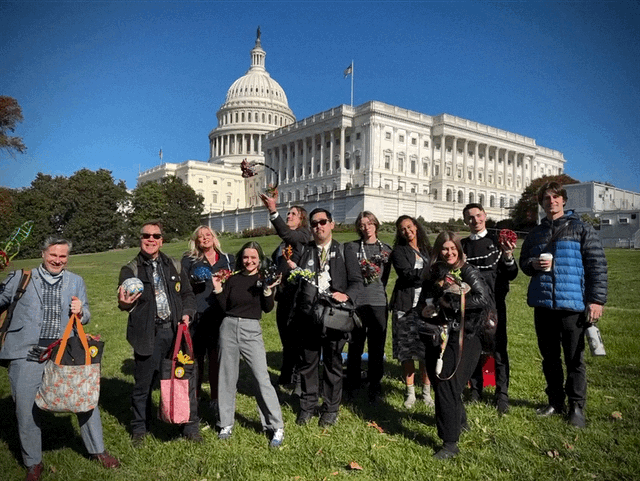
LEARN MORE: Noggin Takes DC


